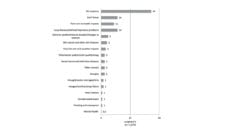Millions of Americans go to the beach every summer hoping to have a good time–soak up some rays, go for a swim. But, too often, they get sick (often with a gastrointestinal illness). In a recent report on waterborne disease and outbreaks, the Centers for Disease Control and Prevention concluded that infections associated with recreational water activities have increased steadily over the last several decades. Swimming, boating, fishing, surfing, and other fun things to do in oceans, lakes, and rivers put individuals at risk when water bacteria levels are too high.
Although cities try hard to prevent people from getting sick, it’s easier said than done.
Authorities need at least 24 hours to measure fecal bacteria–from sewage, birds, or other animals–in the water. The results indicate what illness-causing organisms might be present. If the level or type of bacteria is considered harmful, a warning is posted. But by then, a day’s worth of beachgoers may have already been exposed and become infected.
The EPA reported that as many as 10% of beachgoers report getting sick after swimming at open beaches.
Some cities are adopting a new mechanism that allows authorities to test water quality and post warning signs in the same day, but it’s difficult to implement. Chicago was the first city to accomplish same-day testing thanks to early investment, political will, capable labs, and urban density with beaches in close proximity so signs can be posted promptly. In 2014, the city posted 200 warnings about contaminated water tested that day. It became a model for other states and cities when the EPA debuted its approved same-day water quality testing method based on Chicago’s success.
Data on waterborne illness is notoriously unreliable because people who become ill often don’t realize it’s from the water. Despite incomplete data, the EPA reported that as many as 10% of beachgoers report getting sick after swimming at open beaches. And with population growing in US coastal areas, we can expect more Americans to become ill from beach water until the sources of contamination are addressed.
Dirty water is also bad for the economy of coastal cities–and the country. Some studies estimate the annual economic burden to be between $2.2 and $3.7 billion, primarily due to hospitalizations. Investment in prevention programs pales in comparison. The US spends roughly $10 million per year on beach monitoring and notification programs and reducing wastewater and storm water discharge near beaches.
Rising temperatures, increased storms, floods, and runoff due to climate change also threaten public health by degrading water quality. Many dangerous bacteria thrive in warm water, such as the human flesh-eating bacteria, Vibrio. In June, a 12-year-old girl became infected and gravely ill after swimming at a Florida beach with an open wound. But it wasn’t until a month later it was July 4, one of the year’s busiest beach days, when Florida public health authorities issued warnings for 16 beaches that had elevated bacteria levels considered to be potentially dangerous or harmful.
Photo by Tuan Nguyen on Unsplash














